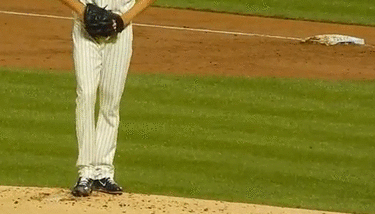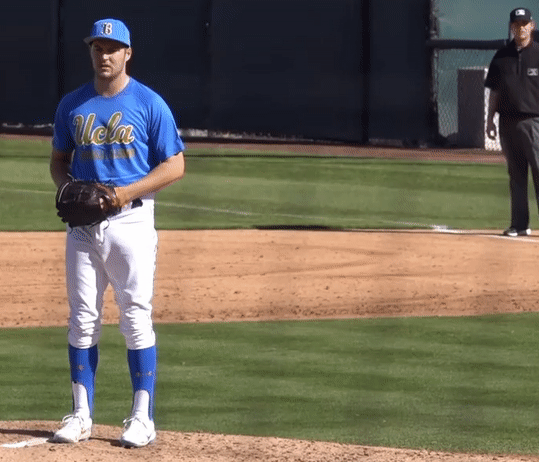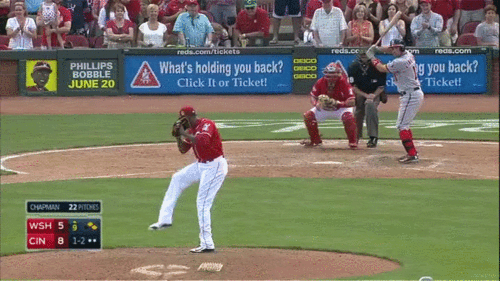Highlighting The Importance of Center of Mass Movement
Throughout high school, I was always fairly slow to the plate as I was concerned with velocity and using my "lower half". Coincidentally, the year prior to my arrival at George Mason the team had just surrendered near 100 stolen bases. Furthermore, every bullpen thrown that fall we had a stopwatch on our delivery times, which at that point I thought to be a little overkill but little did I understand how much it would help my timing within the delivery. When we breakdown the delivery we begin to understand at the core how important center of mass momentum is, whether that is better enabling a hinge, promoting more arm action momentum, arm action timing, energy into foot-strike, pelvic position, etc. However, within the training industry so much emphasis is put on perfect patterning that a lot of core principles are lost, and internalizing these mechanical things is too complex in nature for the body to comprehend in such a dynamic movement (singular cues are different). With the obsession of these patterns and people taking a linear approach to mechanics and velocity I have since realized in both plyo and baseball mound work that often these release numbers are insane. Within the last two weeks I have had multiple professional, college, and high school right handed pitchers flirt with being a 2.0+ to the plate, which is unequivocally not a successful pattern. So, I have begun to put the stopwatch in play more often in hopes of increasing center of mass momentum and cleaning up the delivery as this perception of building up elasticity may work for some, but is inapplicable in game. This post is not meant to devalue certain training programs, but it is something that has become extremely apparent recently in my work at R&D.
To begin with, I should explain what center of mass movement is: as leg lift is initiated the center of the body (belly button) should begin tracking towards the plate - could be at a variety of tempos but it must begin movement as soon as the delivery begins. Here are a few examples below:


My good friend, Ben Brewster wrote a similar blog on this (Here), as he brings up the concepts of counting the frames in the delivery from peak leg lift to ball release, based from a principle first indicated by Paul Nyman. While Ben is spot on with how guys get to peak leg lift differently, in my experience training the range of guys I do, most are not near elastic enough to drastically increase momentum from more static positions in the delivery. Moreover, as I see guys who have obsessed over the hinge and "glute loading" I think this actually puts the pelvis in a worse state to rotate as the tension holds for too long it becomes more difficult to unload. Think about that in terms of any lift, as doing concentric holds or pauses are seemingly more difficult to get out of as these contractions have lost elastic components. Not all individuals are created equal, and I certainly believe those that have longer levers take an increased amount of time to build elasticity. The first move, center of mass momentum, is still in tact with the delivery, just potentially at a varying acceleration number.

In terms of analyzing the elasticity of a given delivery I do believe it is beneficial to see how they tract from the stretch, but also analyzing the rest of their functional movements to see where they reside on the elastic/inelastic spectrum. Good examples of this would be with lateral jumps or medball throws for distance or velocity to see how they best self-organize to try to peak a number. Furthermore, if guys are moving either too fast or too slow I believe that you can very accurately address these tempo issues with varying constraint drills. I would also add that even if one believes they have perfected their center of mass move and the corresponding acceleration performing a variety of drills that promote more or less center of mass movement is beneficial. In order to just give a preview below are an example of slowing down the center of mass move (lower half can become very pushy and disengage rear glute early - jumpy) and one that forces an aggressive move.
You can see a bit of a push in this delivery, so a good counter movement would be this dropstep:
Aside from lateral center of mass shift (up/down) mound there are also complications in terms of direction anterior/posterior. Here is a guy who has compensated in the past attempting to feed a hinge quite too much that resulted in poor direction. However, hip mobility must be factored into this as I have generally seen wider gate swingers who shift their center of mass towards the glove side generally have tighter hips and this makes it easier to clear them. The individual referenced in videos below presents as having tight hips, and this subtle direction adjustment helped, but can also be detrimental when he takes it too far. To clarify I am labeling this as a "posterior" center of mass shift.
On the inverse, guys who we see "knee crash" I believe can stem from a foundational issue of center of mass direction. As we see through the delivery as the pelvis rotates down into footplant the knee has to have flexibility that often resides with femur length in a position that is not a "vertical shin". In fact I would argue that obsessing over a vertical shin creates an environment where the athlete can only throw the ball at higher velocities at very slow tempos which may be inapplicable in game. Generally the slower movers who are more inelastic have longer levers. Longer limbs usually indicate the femur needs ample space to build tension in the femoroacetabular joint as well as the space necessary to clear the pelvis into footstrike and aid in deceleration. As an example of this longer level length and the unfeasible application of a "vertical shin" here is an Aroldis Chapman demonstration:

Back to the direction of mass momentum, here is an example of anterior momentum:
Lastly, here are a few drills that trigger center of mass momentum in a certain direction that can be utilized to better set direction or force the athlete out of that compensation by "feeding the mistake", which I prefer a variety of both.
In the training world as guys become more conscious of the technicalities of movement, I think it is very important to commit to the essentials of center of mass movement. While hinges are being over-taught and cued I believe that center of mass movement is corrupted in a lot of scenarios. Not to mention, if a hinge is being taught in isolation via plyos or other constraint drills, we lose concept of on field application as it pertains to time to the plate, so why hammer a pattern that cannot be used on the field? Some food for thought as I believe this central part of the delivery that provides timing and sequencing is often overlooked.
Thanks for reading!